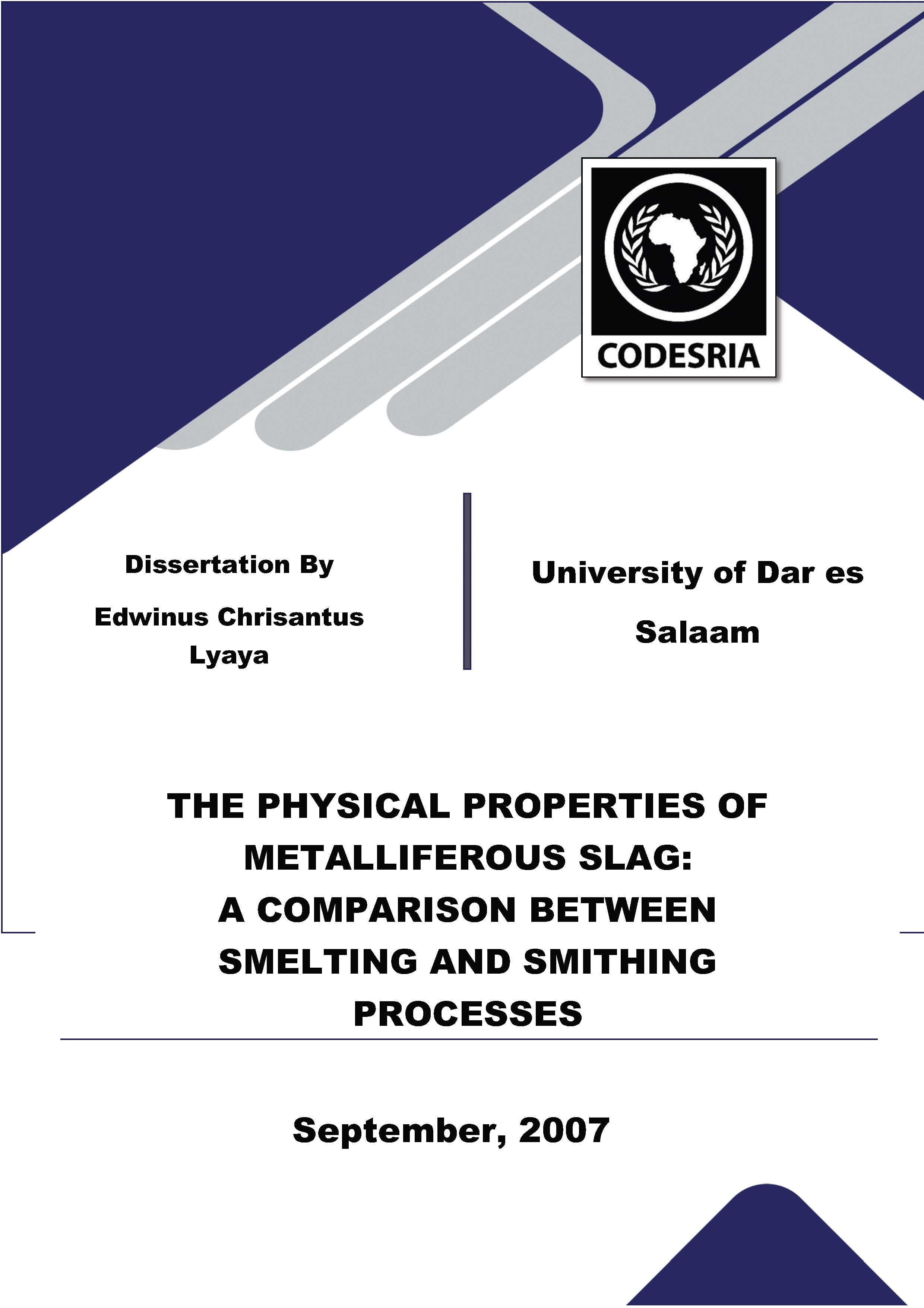THE PHYSICAL PROPERTIES OF METALLIFEROUS SLAG: A COMPARISON BETWEEN SMELTING AND SMITHING PROCESSES
Keywords:
PHYSICAL PROPERTIES, METALLIFEROUS SLAGSynopsis
African iron working technology involved smelting, refining, and smithing technological and functional processes or stages. These produced three respective metalliferous slag types namely smelting slag, refining slag and smithing slag. Unfortunately, not all writers are clear with the distinction of the three types. Some recognize smelting slag alone, others recognize smelting and smithing slag, and yet others confuse between refinery and smithing slag. This work examines the physical properties of metalliferous slag with emphasis on smelting and smithing. It has left out refinery slag because not all smelted iron was refined, but all smelted iron was ultimately forged. The examination is based on samples from incontrovertible smelting and smithing sites. Physical attributes for each type of slag have been identified with a view to establish distinguishing criteria between smelting and smithing slag.The research has found out that smelting and smithing slag are quite different in terms of general size, mass or weight, density, morphology, thermal condition, magnetism, fragmentation, weathering, and surface conditions. This work shows that the two are closely related in such attributes as luster, color(s), porosity, inclusion, impressions and source materials. Through the study of the physical attributes, it is therefore possible to distinguish smelting from smithing slag, and so smelting from smithing sites. However, the role of matrix and provenience is also important in ascertaining the two categories.
Downloads






